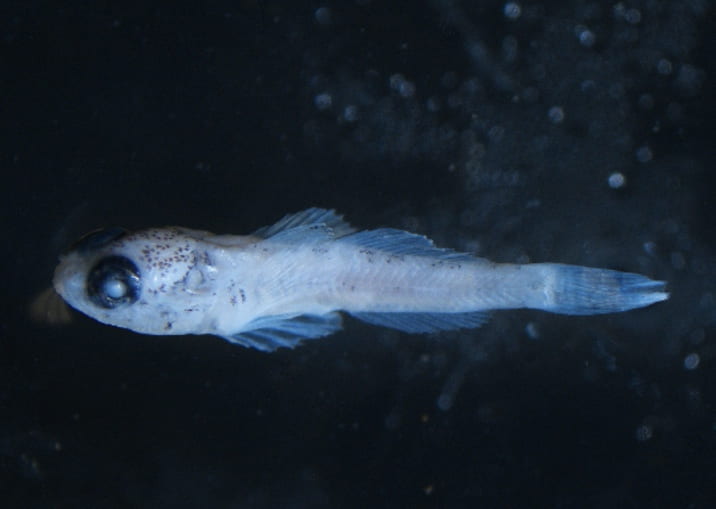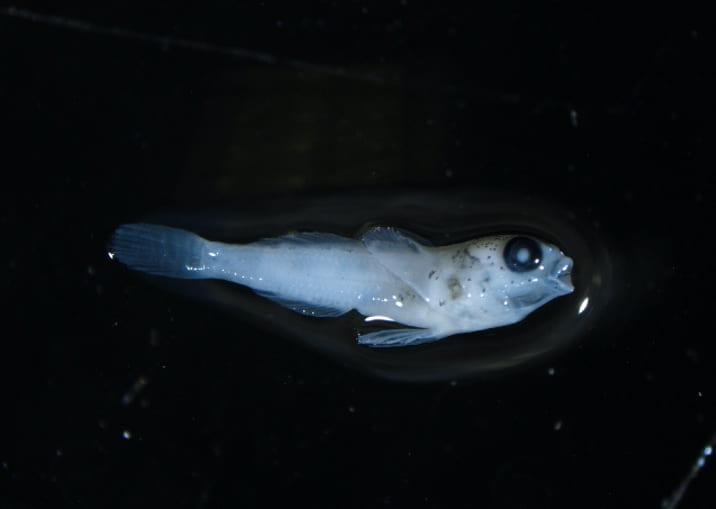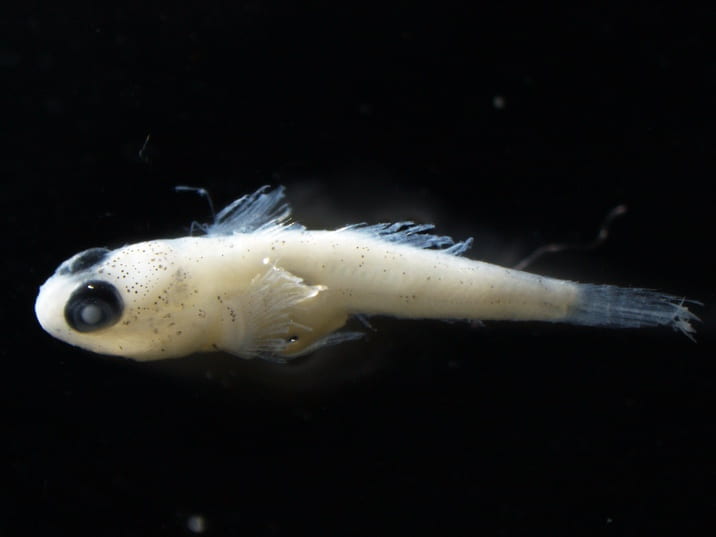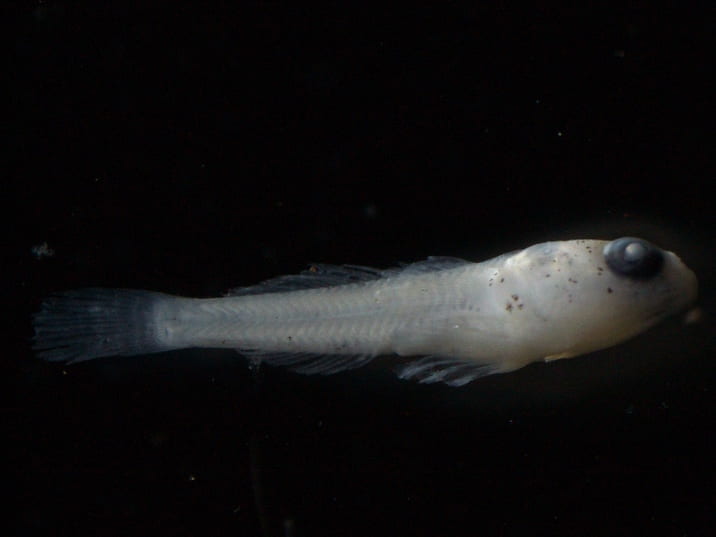Key Characteristics:
- More post-anal myomeres than pre-anal (2:1 ratio).
- Large head, stocky shape for benthic living.
- Looks very similar to sculpins, but two main differences.
- Pectoral fins in gobies are larger during larval stage than in sculpin.
- Pectoral fin in gobies is fused into one, in sculpin they are separate.
- fins tear easily so may appear separate when they aren’t.
- Currently, only Round gobies are found in Lake Michigan

Larval Round Goby. 6 mm. United States Fish and Wildlife Service. Green Bay, WI. Adam Dziewa. 2018.

Round Goby Larvae. 7 mm. United States Fish and Wildlife Service. Green Bay, WI. Adam Dziewa. 2018.

Larval Round Goby. 5 mm. United States Fish and Wildlife Service. Green Bay, WI. Adam Dziewa. 2018.

Larval Round Goby. 8 mm. United States Fish and Wildlife Service. Burns Harbor, IN. Adam Dziewa. 2018.

Larval Round Goby. United States Fish and Wildlife Service. Marian Shaffer. 2017.

Larval Round Goby. United States Fish and Wildlife Service. Marian Shaffer. 2017.

Larval Round Goby’s Myomere Count. United States Fish and Wildlife Service. Marian Shaffer. 2017.
*Since Round Gobies are a new invasive species to Lake Michigan, I used the Cottidae Family’s Dichotomous Key to narrow down identifying the two larval species.*
- Body not elongated, eel-shaped, round in transverse section, uniformly pigmented (1B)
- Chin barbels absent (3B)
- Snout short, its length usually less than 10% TL; median fins otherwise (5B)
- Median fins or finfolds continuous, or nearly so (7A)
- Pectoral fins large and usually well developed; lower jaw without barbel; urostyle upturned or notochord straight, if straight caudal fin rays developed on ventral half only (8B)
Adult History
- Physical Description
- Large head, raised eyes, black spot on first dorsal fin, fused pelvic fin, brown/black splotches over the body, spineless dorsal fins, no dark bars on fins, small dark spot by upper pectoral rays, 18-19 pectoral rays, 48-55 lateral scales
- Spawning Habitat
- Spawning occurs in shallow areas of streams, lakes, Rivers, or ponds
- They thrive in high pollution, low water quality, and low oxygen concentrations
- Spawning Substrate
- Eggs are deposited over hard substrates (organic debris, sand, gravel, rocks, or pollution)
- Spawning Behavior
- Polyandrous Behavior
- Migrate from deeper water to shallower and warmer water for spawning
- Males build and aggressively guard their nests
- Multiple females may spawn in a male’s nest
- Females can spawn up to every 20 days
- Ecological advantage over other species
- Courtship Behaviors
- Males have black bodies have yellow spots
- Median fins have white or yellow edges
- Time of Year
- April – August/September in Lake Michigan
- Spawning typically takes place at water temperatures of 48 – 80°F
- Diet
- Carnivore (Insectivore & Molluscivore)
- Insects, smaller fish, eggs, mollusks, and aquatic crustaceans
- Courtship Behaviors

